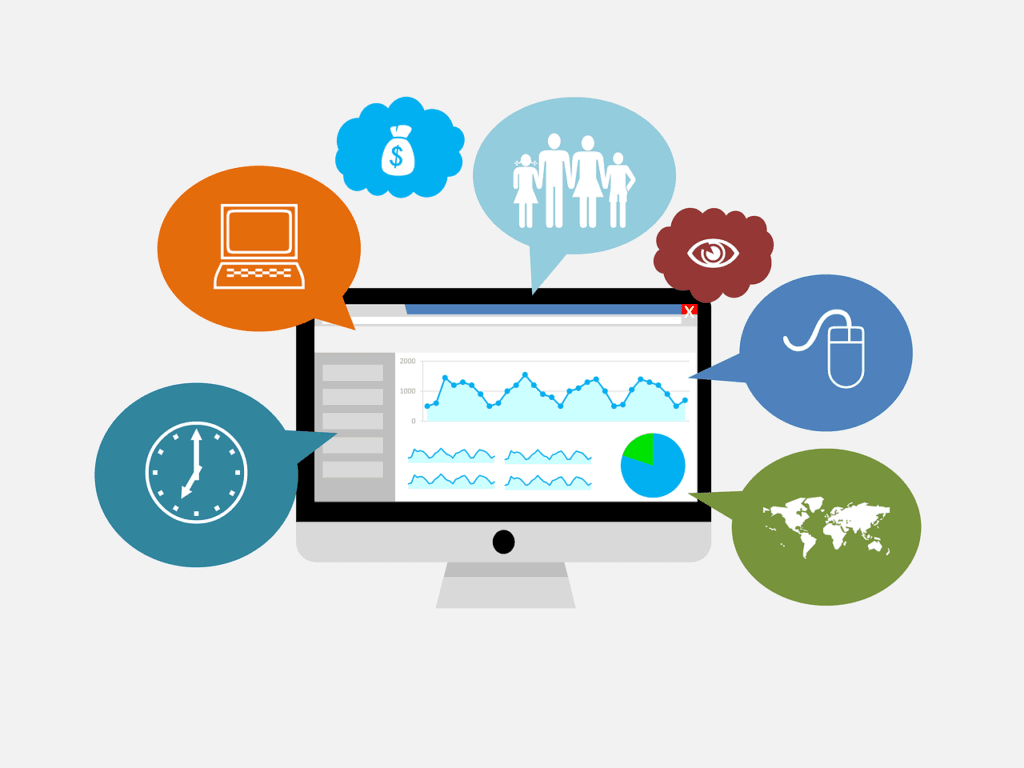This Article has been revised, edited and added to, by Poulomi Chakraborty.
- The Power of Comparison: Data-Driven Branding vs. Traditional Branding
- Understanding Traditional Branding
- Transitioning to Data-Driven Branding
- Real-World Impact
- Strategic Advantages of Data-Driven Branding for Startups
- Gaining a Competitive Edge with Targeted Marketing
- Cost Efficiency in Brand Development
- Building Brand Loyalty Through Personalization
- Leveraging Predictive Analytics for Future Growth
- Enhancing Brand Perception: Data-Driven Insights vs. Assumption-Based Strategies
- Assumption-Based Brand Perception Strategies
- Data-Driven Brand Perception Enhancement
- Real-World Example: Consumer Electronics
- Tailoring Brand Perception with Precision
- Real-Time Adaptation to Market Feedback
- Strategic Narrative Building
- Predictive Insights for Proactive Branding
- Establishing Credibility through Data Transparency
- Maximizing Campaign Effectiveness: Data-Driven Optimization vs. Conventional Campaign Execution
- Conventional Campaign Execution
- The Shift to Data-Driven Campaign Optimization
- Comparative Advantage in Adaptability
- Crafting Precision-Targeted Campaigns
- Leveraging Data for Dynamic Budget Allocation
- Implementing Continuous Improvement Loops
- Predicting Customer Behavior to Enhance Engagement
- Cultivating Brand Advocates through Data Insights
- Implementing Actionable Strategies in Data-Driven Branding
- Strategy 1: Integrating Advanced Analytics Tools
- Strategy 2: Establishing Data Collection Points
- Strategy 3: Utilizing Real-Time Data for Agile Decision-Making
- Strategy 4: Personalizing Customer Experiences
- Strategy 5: Continuous Learning and Adaptation
- Optimizing Customer Interaction Through Data Integration
- Enhancing Product Development with Customer Insights
- Creating a Culture of Data-Driven Decision Making
- Utilizing Social Media Analytics for Brand Positioning
- Harnessing Geo-Data for Market Expansion
- Conclusion
In today’s competitive market, the secret sauce to crafting a brand that resonates with consumers isn’t just creativity—it’s also about leveraging the right data and analytics. This combination enables brands to make informed decisions that not only enhance customer engagement but also drive growth. Through this detailed exploration, we’ll uncover how data and analytics transform the branding landscape, offering tactical and actionable insights that you can apply directly to your business strategies.
The Power of Comparison: Data-Driven Branding vs. Traditional Branding

In the realm of branding, the evolution from traditional strategies to data-driven approaches marks a significant shift in how businesses understand and interact with their target audiences.
Traditional branding is often rooted in intuition and experience, relying on creative insights to craft brand messages and identities. While this method has its merits, it is inherently limited by its subjective nature and the scope of personal experience.
Understanding Traditional Branding
Traditional branding focuses on creating a strong, memorable brand identity through logos, taglines, and a consistent thematic presence across all marketing materials. The goal is to create a lasting impression in the consumer’s mind, hoping that this emotional connection will drive loyalty and sales.
This approach leans heavily on creative expertise and less on empirical data, making it somewhat of a high-stakes gamble. Without concrete data, it’s challenging to predict market trends, understand customer preferences in depth, or gauge the effectiveness of marketing campaigns beyond surface-level metrics like sales and reach.
Transitioning to Data-Driven Branding
Enter data-driven branding, where each decision is backed by data analysis. This method does not merely guess what customers might like but uses detailed analytics to uncover patterns and preferences in consumer behavior.
Data-driven branding utilizes tools like customer segmentation, A/B testing, social media analytics, and market research to develop a nuanced understanding of what drives consumer engagement and loyalty.
The Comparative Advantage
One clear advantage of data-driven branding over traditional methods is the ability to adapt quickly to changing market conditions. For instance, during a product launch, real-time data can help marketers adjust their strategies based on immediate feedback from early adopters.
This agility is less feasible in traditional branding, which often commits to a long-term strategy that might not be easy to alter without substantial costs.
Furthermore, data-driven insights allow brands to personalize their communications. Instead of broadcasting a one-size-fits-all message, brands can tailor their marketing efforts to resonate with different segments of the market, increasing the relevance and effectiveness of their campaigns.
Real-World Impact
To illustrate, consider a clothing retailer that has historically targeted a broad demographic. Using traditional branding, they might focus on general trends in fashion and classic styles that appeal to a wide audience.
However, with data-driven branding, the same retailer could identify specific fashion preferences and spending habits among different consumer segments, such as millennials or Gen Z.
They could then create specialized marketing campaigns that speak directly to the interests of these groups, perhaps highlighting sustainability in materials for environmentally conscious consumers, or featuring cutting-edge designs for those who follow high fashion.
This ability to micro-target can lead to significantly higher engagement rates, as consumers are more likely to respond to messages that address their specific needs and desires.
Moreover, the data collected from these campaigns provides ongoing insights, enabling brands to refine their strategies continually and build deeper connections with their audience.
Strategic Advantages of Data-Driven Branding for Startups
In the fast-paced world of startups, where resources are limited and the pressure to deliver is high, embracing a data-driven approach to branding can offer significant strategic advantages.
Traditional branding relies heavily on intuition and established industry norms, which can sometimes miss the mark in understanding and engaging today’s diverse consumer base.
In contrast, data-driven branding provides a factual basis for decision-making, which can be particularly beneficial for startups aiming to carve out a niche in competitive markets.
Gaining a Competitive Edge with Targeted Marketing
For startup founders, understanding the granularity of target markets is crucial. Data-driven branding allows you to segment your audience with precision, identifying niche markets that are often overlooked by competitors.
By analyzing consumer data, startups can uncover unique preferences and pain points of different customer segments, enabling them to tailor their offerings more effectively.
This targeted approach not only optimizes marketing spend but also enhances customer satisfaction by delivering products and services that truly meet user needs.
Cost Efficiency in Brand Development
Startups typically operate under stringent budget constraints. Data-driven branding can significantly reduce financial waste through more efficient ad spending and campaign management.
By analyzing the effectiveness of different channels and messaging in real-time, startups can quickly pivot away from strategies that are not yielding results. This not only helps in optimizing the marketing budget but also speeds up the process of finding the right market fit for the brand’s offerings, a critical factor in the early stages of a startup’s development.
Building Brand Loyalty Through Personalization
In today’s market, personalization is key to building brand loyalty. Data-driven strategies allow startups to personalize customer interactions at various touchpoints. By leveraging data on customer behaviors and preferences, startups can craft personalized messages that resonate more deeply with individuals.
This tailored approach helps in forming stronger emotional connections with the brand, which is essential for customer retention and word-of-mouth marketing.
Leveraging Predictive Analytics for Future Growth
Another strategic advantage for startups in using data-driven branding is the ability to leverage predictive analytics. By analyzing current and historical data, startups can forecast trends, customer behaviors, and potential market shifts.
This forward-looking approach allows startups to stay ahead of the curve, anticipate market needs, and adjust their strategies proactively rather than reactively. It also aids in risk management by identifying potential threats and opportunities early, enabling founders to strategize effectively to mitigate risks and capitalize on upcoming trends.
Enhancing Brand Perception: Data-Driven Insights vs. Assumption-Based Strategies

The perception of a brand in the eyes of consumers can make or break its success. How a brand is seen can influence everything from the trust consumers place in it to the viral potential of its marketing campaigns. In this section, we’ll compare how data-driven insights enhance brand perception versus traditional assumption-based strategies.
Assumption-Based Brand Perception Strategies
Traditionally, brand perception has been shaped by assumptions about what the brand believes its customers value. These assumptions may stem from industry norms, historical successes, or even the personal preferences of the company’s leadership.
For instance, a luxury car brand might focus on showcasing the prestige and performance of its vehicles, assuming that these are the primary attributes valued by all its potential customers. While this approach can sometimes hit the mark, it often leads to a generalized and potentially outdated understanding of consumer preferences.
Data-Driven Brand Perception Enhancement
Data-driven branding, on the other hand, employs a variety of analytical tools to obtain a realistic picture of what consumers actually think about a brand. This method involves gathering data from social media monitoring, customer feedback, online reviews, and engagement metrics.
By analyzing this data, brands can identify not only what attributes are truly important to their audience but also any discrepancies between the brand’s intended image and public perception.
The Benefits of a Data-Driven Approach
A key benefit of using data to shape brand perception is the ability to address issues proactively. For example, if analysis reveals that customers feel a brand’s customer service is lacking, immediate improvements can be made before the issue affects a larger segment of the customer base.
Similarly, positive attributes that resonate with the audience can be amplified to strengthen the brand’s overall market positioning.
Real-World Example: Consumer Electronics
Consider a consumer electronics company that traditionally focuses on promoting the technical specifications of its products. Assume that market trends shift, and consumers begin valuing user-friendly design equally or more than technical prowess.
A data-driven approach would quickly reveal this shift through changes in customer feedback and product review trends. The company could then adjust its marketing focus to highlight ease of use, perhaps even influencing product development to align better with consumer desires.
This agility is less attainable with assumption-based strategies, which might delay recognizing such shifts until after a decline in sales, by which point recovering customer trust and interest could be significantly more difficult.
Tailoring Brand Perception with Precision
For startups, brand perception can be a make-or-break factor in the early stages of growth. While traditional branding methods rely on assumptions based on market norms and often untested beliefs about customer preferences, data-driven insights allow startups to tailor their brand perception with precision.
This method involves detailed analysis of customer feedback, engagement metrics, and competitive positioning, providing a clear roadmap for how the brand should position itself to resonate with its target audience.
Real-Time Adaptation to Market Feedback

One of the unique advantages of a data-driven approach is the ability to adapt branding strategies in real time. Startups, with their typically agile structures, can benefit significantly from this capability.
By continuously monitoring how their brand is perceived through social media sentiment analysis and online reviews, startups can quickly pivot their messaging or even aspects of their product offerings in response to consumer feedback.
This dynamic approach to brand management not only helps in maintaining a positive brand image but also empowers startups to evolve alongside their customers’ needs and expectations, fostering a sense of loyalty and trust that is invaluable.
Strategic Narrative Building
Crafting a compelling brand narrative is crucial for startups, and data-driven insights provide a solid foundation for this storytelling. By understanding the core values and emotional drivers of their audience, startups can construct narratives that are deeply aligned with the interests and desires of their customers.
This strategic alignment between brand messaging and consumer expectation not only enhances the brand’s appeal but also increases the effectiveness of marketing communications, making every message more impactful and resonant.
Predictive Insights for Proactive Branding
Another critical strategy for startups is leveraging predictive analytics to anticipate changes in consumer behavior and market conditions. This foresight allows startups to proactively adjust their branding efforts before major shifts occur, staying ahead of industry trends and competitor moves.
By using data to forecast future needs and preferences, startups can position themselves as forward-thinking and innovative, qualities that are highly attractive in new ventures and can differentiate them from more established competitors.
Establishing Credibility through Data Transparency
In an era where consumers are increasingly skeptical of marketing claims, startups can use their data-driven approach as a tool for building credibility. By openly sharing how data influences their products and marketing strategies, startups can foster a transparent relationship with their customers.
This transparency not only bolsters consumer trust but also strengthens the brand’s reputation as an accountable and customer-centric business. Additionally, engaging customers in discussions about data use and brand evolution can lead to more interactive relationships, where feedback is not only encouraged but actively sought to improve the product and brand experience.
Maximizing Campaign Effectiveness: Data-Driven Optimization vs. Conventional Campaign Execution

In the competitive landscape of marketing, the effectiveness of a campaign can dramatically influence a brand’s market share and profitability. This section explores how data-driven optimization of marketing campaigns contrasts sharply with conventional campaign execution methods.
Conventional Campaign Execution
Traditionally, marketing campaigns are often planned based on past campaigns’ successes, industry standards, and somewhat static marketing plans. These campaigns are typically executed with a predetermined set of messages and media buys, and they follow a set schedule.
For example, a beverage company might roll out its summer ad campaign every year in May, featuring outdoor ads and television commercials that emphasize refreshment and fun, regardless of varying consumer interests or media consumption patterns from year to year.
The Shift to Data-Driven Campaign Optimization
Data-driven campaign optimization represents a paradigm shift in how marketing strategies are devised and executed. This approach uses real-time data to continually assess and refine campaign tactics.
Key performance indicators (KPIs), such as click-through rates, conversion rates, and social media engagement, are monitored closely, allowing marketers to tweak and optimize campaigns even while they are running.
Enhanced Targeting and Personalization
One of the main strengths of data-driven optimization is the ability to target specific consumer segments with personalized messages. This is made possible through the analysis of detailed data sets, including demographic information, online behavior, and purchasing history.
For instance, instead of a generic summer campaign, the beverage company might discover through data analysis that its target audience of young adults responds more enthusiastically to digital ads featuring music festivals rather than traditional TV commercials.
Comparative Advantage in Adaptability
The adaptability that comes with data-driven approaches allows campaigns to be more responsive to unforeseen changes or emerging trends. If a particular ad is not performing well, it can be adjusted or replaced without waiting for the campaign to end. This responsiveness not only conserves resources but also maximizes the impact of marketing efforts.
Real-World Impact: Fashion Retail
Consider a fashion retailer that launches a new clothing line. A conventional campaign might rely heavily on seasonal trends predicted months in advance. However, a data-driven campaign would analyze real-time sales data, online search trends, and social media feedback, adjusting marketing messages accordingly to highlight the most popular items or to address any missteps in the initial product launch.
This real-time adjustment helps maintain consumer interest and can lead to better overall sales performance. By continuously optimizing the campaign, the retailer remains relevant and appealing to its audience, thereby increasing the likelihood of achieving its sales targets.
Crafting Precision-Targeted Campaigns
For startups, every marketing dollar needs to work efficiently. Traditional campaign methods often spray and pray, distributing messages widely and hoping they land with the right audience.
In contrast, data-driven optimization enables startups to craft precision-targeted campaigns that reach the right people with the right message at the right time. This level of targeting is achieved through a detailed analysis of customer demographics, online behaviors, and engagement patterns, allowing startups to develop highly focused marketing strategies that significantly reduce waste and enhance the impact of their campaigns.
Leveraging Data for Dynamic Budget Allocation
Startups must be adept at managing limited resources, and dynamic budget allocation is a critical aspect of data-driven campaign optimization. By analyzing real-time data on campaign performance, startups can shift resources to high-performing channels and pull back from those that are underperforming.
This agility in budget management ensures that marketing expenditures are always optimized for the best possible returns, which is crucial for maintaining financial health and driving growth in the competitive early stages of a business.
Implementing Continuous Improvement Loops
The essence of maximizing campaign effectiveness through data-driven strategies lies in the implementation of continuous improvement loops. This involves consistently testing, measuring, and refining campaigns based on data insights.
For a startup, this could mean running A/B tests on different ad creatives, experimenting with various messaging approaches, or trying out different platforms to see which yields the best engagement.
The key is to treat each campaign as a learning opportunity, using the insights gained to refine subsequent strategies, thus incrementally improving the effectiveness of marketing efforts over time.
Predicting Customer Behavior to Enhance Engagement
Predictive analytics is a powerful tool in the arsenal of data-driven branding, particularly for campaign optimization. By analyzing past consumer behavior data and identifying patterns, startups can predict future behaviors and preferences.
This foresight allows startups to craft marketing messages that are more likely to resonate with their audience, anticipate and respond to shifts in consumer interests, and engage customers through personalized experiences that feel uniquely tailored to their needs and expectations.
Cultivating Brand Advocates through Data Insights
Finally, the ultimate goal of any campaign should not just be to sell a product but to cultivate brand advocates who will amplify the brand message through word of mouth. Data-driven campaign optimization enables startups to identify their most engaged customers and understand the core drivers of their satisfaction.
Armed with this knowledge, startups can develop targeted initiatives that encourage these satisfied customers to share their positive experiences, thus leveraging their advocacy to organically grow the brand’s presence and credibility in the market.

Implementing Actionable Strategies in Data-Driven Branding
Transitioning to a data-driven branding approach requires not just an understanding of the advantages but also a concrete plan to implement actionable strategies. Here, we’ll explore several key strategies that brands can adopt to leverage data effectively and enhance their branding efforts.
Strategy 1: Integrating Advanced Analytics Tools
The first step in adopting a data-driven approach is the integration of advanced analytics tools that can capture, analyze, and interpret data from a variety of sources. These tools can range from customer relationship management (CRM) systems to sophisticated analytics platforms that monitor social media trends and website engagement.
Implementation Tips:
- Select Tools That Fit Your Brand’s Needs: Depending on the size of your business and the nature of your market, choose tools that can provide the data you need without overwhelming your team with complexity.
- Train Your Team: Ensure that your marketing team understands how to use these tools effectively. This might involve regular training sessions and updates as new features or data sources become available.
Strategy 2: Establishing Data Collection Points
To make informed branding decisions, it’s crucial to establish various data collection points throughout the customer journey. This includes touchpoints like website visits, social media interactions, customer surveys, and purchase transactions.
Implementation Tips:
- Map the Customer Journey: Identify all the potential points where customers interact with your brand, and set up mechanisms to capture relevant data at each point.
- Privacy Compliance: Always stay compliant with data protection regulations like GDPR or CCPA, ensuring customers’ data is collected and used ethically.
Strategy 3: Utilizing Real-Time Data for Agile Decision-Making
The ability to make decisions quickly is a significant advantage in today’s fast-paced market environment. Using real-time data allows brands to react promptly to customer feedback, market trends, or operational challenges.
Implementation Tips:
- Invest in Real-Time Analytics: Implement systems that provide real-time insights into customer behavior and market conditions.
- Create a Responsive Action Plan: Develop protocols that allow your team to make quick decisions based on real-time data, such as promotional offers in response to competitor activities or adjustments in ad spend based on campaign performance.
Strategy 4: Personalizing Customer Experiences

Data-driven branding excels at enabling personalized experiences, which can significantly enhance customer satisfaction and loyalty. By understanding customer preferences and behaviors, brands can tailor their communications, offers, and products to meet the unique needs of different customer segments.
Implementation Tips:
- Segment Your Audience: Use data to create detailed customer segments based on demographics, behaviors, and preferences.
- Tailor Marketing Messages: Develop customized marketing messages that resonate with each segment, potentially increasing engagement and conversion rates.
Strategy 5: Continuous Learning and Adaptation
The final strategy is about fostering a culture of continuous learning and adaptation. The landscape of data and consumer behavior is always evolving, and so must your brand’s strategies.
Implementation Tips:
- Feedback Loops: Establish feedback loops that allow learnings from data insights to be quickly integrated into future branding and marketing strategies.
- Regular Review and Adaptation: Schedule regular sessions to review data insights and adapt strategies as necessary to stay aligned with consumer trends and preferences.
Optimizing Customer Interaction Through Data Integration
For startups, the integration of data across all customer touchpoints can significantly enhance the effectiveness of branding efforts. This comprehensive approach ensures that every interaction with the customer is informed by data, leading to more personalized and impactful experiences.
From the initial point of contact through to post-sale support, data integration helps create a seamless narrative and consistent brand experience that resonates with customers and builds lasting loyalty.
Enhancing Product Development with Customer Insights
Startups can gain a competitive edge by using data-driven insights to influence product development. By analyzing customer feedback, purchase behavior, and market trends, startups can identify gaps in their offerings and opportunities for innovation.
This ongoing loop of feedback and product adjustment not only meets the evolving needs of the market but also positions the brand as responsive and customer-focused. The result is a product line that is continually refined to appeal to current and prospective customers, driving both satisfaction and sales.
Creating a Culture of Data-Driven Decision Making
Cultivating a culture that prioritizes data-driven decision-making is vital for startups looking to leverage the full potential of their analytics capabilities. This cultural shift requires training teams to prioritize data in their daily operations and decision-making processes.
Encouraging a data-centric mindset across all levels of the organization can lead to more informed, effective, and strategic business practices that drive growth and innovation.
Utilizing Social Media Analytics for Brand Positioning
Social media platforms are treasure troves of consumer data and sentiment that can inform more effective branding strategies. By monitoring social media analytics, startups can understand how their brand is perceived in real-time, track the impact of specific campaigns, and adjust strategies to better align with customer expectations and preferences. This responsive approach allows startups to stay relevant and engaged with their audience, adapting to trends and feedback as they emerge.
Harnessing Geo-Data for Market Expansion
Geo-data can be particularly useful for startups looking to expand their market presence. By analyzing data from different geographic locations, startups can tailor their marketing and branding efforts to suit regional preferences and cultural nuances.
This strategic use of geo-data not only enhances the relevance of the brand in new markets but also increases the effectiveness of promotional efforts, ensuring that they resonate well with local audiences.
Conclusion
Embracing data-driven branding transforms intuition-based strategies into informed, strategic decisions that align closely with consumer behaviors and market dynamics. By integrating advanced analytics tools, establishing robust data collection points, and leveraging real-time data, brands can not only react swiftly to market changes but also personalize the customer experience in unprecedented ways. The ongoing process of learning and adapting based on data not only enhances the effectiveness of campaigns but also ensures that a brand remains relevant and resonant with its audience.
As we’ve seen, the shift from traditional to data-driven approaches in branding is not merely a trend but a fundamental change in how brands cultivate their identities and engage with consumers. In this digital age, data is invaluable, and those who harness it effectively will lead the market in innovation and customer satisfaction. Brands looking to thrive in an increasingly competitive environment will find data-driven branding an essential element in their marketing arsenals, ensuring they stay one step ahead of consumer expectations and industry shifts.
Read Next
- Impact of Predictive Analytics on Sales Forecasting: A Deep Dive!
- How to use GetResponse: An Explainer!
- How to use Loomly: An In-Depth Explainer
- How to use SocialPilot: An Explainer!
- How to use Sendible: An Explainer






















Comments are closed.